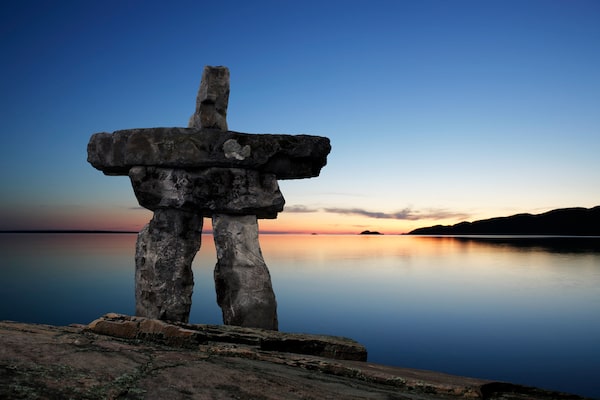
A recent study from the Indigenomics Institute states that Canada’s Indigenous economy has the potential to reach $100-billion in the next five years – more than three times its current value.sharply_done/iStockPhoto / Getty Images
The number of Indigenous business owners and entrepreneurs in Canada is growing at five times the rate of self-employed Canadians, posing an opportunity to provide these entrepreneurs with sophisticated financial advice.
A recent study from the Indigenomics Institute, an organization that aims to support the rebuilding and design of Indigenous economies, states that Canada’s Indigenous economy has the potential to reach $100-billion in the next five years – more than three times its current value.
Yet, most Canadians are not even aware that there is an Indigenous economy, or how fast it is evolving, says Dale Sturges, national director, Indigenous financial services group, at Royal Bank of Canada in Toronto.
“There has always been a thriving Indigenous economy, long before colonization. Now that Indigenous nations are reclaiming their right to self-determination, they’re designing modern economies of scale that are in alignment with their values and cultural traditions,” he says.
“While Indigenous economic development is surging, key challenges remain that are hampering further growth. It’s an area of opportunity still plagued by misconceptions and myths,” Mr. Sturges adds.
For advisors who serve Indigenous communities, it’s crucial to become educated on these groups’ realities, says Domenic Natale, vice president, Aboriginal services, at TD Wealth in Toronto.
“It’s critical to recognize the specific uniqueness of each [Indigenous] community, including their culture, traditions and history,” he says. “There are approximately 630 First Nations in Canada, and although there are commonalities, each one is a unique nation and they expect to be recognized as such.”
A common general misconception Mr. Natale has come across is that First Nations people don’t pay any taxes. In fact, as individuals, Indigenous people pay the same taxes and are subject to the same rules as non-Indigenous peoples, he says.
Mr. Natale clarifies that there are some exemptions under the Indian Act, specifically under section 87, which provides for personal property situated within a reserve to be exempt from taxation.
“Employment income earned on a reserve can also be tax exempt,” he says. “Purchases made on a reserve, or goods that are delivered to a reserve, are not subject to federal GST. In fact, in some provinces like Ontario and Quebec, a status Indian can apply for, and receive, a rebate on the provincial portion of the HST for eligible items.”
Another misconception is that all Indigenous people live on a reserve or in rural areas. According to Statistics Canada, only 20 per cent – or one in five Indigenous Canadians – live on a reserve.
“Of those living off a reserve, more than 55 per cent actually live in urban areas. This isn’t a new trend as the statistics show that this has been a trend for many years – yet it’s not well known,” Mr. Natale says.
Advisors must also recognize that Indigenous people still have an uneven playing field when it comes to having the means to invest in businesses, infrastructure and community development projects. One of these challenges is lack of access to capital, Mr. Sturges says. “As reserve property is technically held in trust by the Crown, it cannot be leveraged as collateral or used to guarantee large equity loans.”
Complex negotiation processes and on-reserve legal and regulatory environments are another difficult hurdle to overcome, as they bog down even simple infrastructure development projects.
Finally, a lack of adequate education resources in reserve communities has resulted in a human capacity shortage.
“Support for training and education programs focusing on business and finance skills would help communities advance their capacity for successfully managing their own economic development on their terms,” Mr. Sturges says.
Although advisors or the institutions they work for cannot solve many of these barriers, they can do a lot to address the gaps. For example, Toronto-Dominion Bank has made a significant commitment to funding the creation of financial literacy programs for Indigenous school-age students and adult learners. And Bank of Montreal’s effort to becoming the leading bank in Canada in terms of the percentage of Indigenous people in its workforce has led to it being recognized by the Canadian Council for Aboriginal Business.
Furthermore, Leith Wheeler Investment Counsel Ltd. in Vancouver embarked on a consultation process to understand the key needs of the communities seeking help with their investments and now funds several scholarships and programs for Indigenous studies.
To best serve the needs of First Nations communities, a good advisor will possess two key attributes, says Andrew Hoffman, vice-president and portfolio manager at Leith Wheeler, which currently manages more than $1-billion for 32 Indigenous communities across Canada. These key attributes are a true understanding of each community’s unique needs and a competitive advantage in fulfilling those needs, he says.
“You may be pressured to deviate because it’s hard work and takes time to build relationships. But it is so key that your advice is rooted in an understanding of the people, history and the specific needs of each community you’re dealing with,” he says.
“This is not a scalable business. ... Trust is paramount, so a demonstrated commitment to helping is table stakes,” Mr. Hoffman says.
Editor’s note: An earlier version of this article included an incorrect name for the Canadian Council for Aboriginal Business.